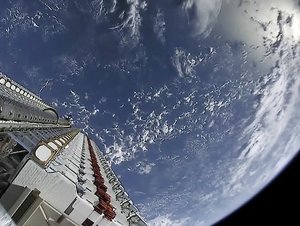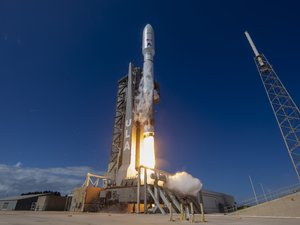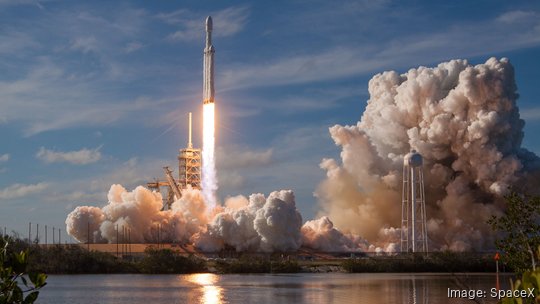
The SpaceX Falcon Heavy on Dec. 10 will launch from Kennedy Space Center for the fifth time this year — this time carrying the Boeing X-37B, according to a U.S. Space Force announcement.
This is the Falcon Heavy's first time as the launch vehicle for the X-37B, an unmanned aircraft designed to test technologies in space for the U.S. Air Force. Previous X-37B missions used rockets such as the McDonnell Douglas Delta II 7920 and the Lockheed Martin (later made by United Launch Alliance) Atlas 5.
A time for the Heavy launch has yet to be announced.
Meanwhile, the X-37B program, which consists of two planes, has been in effect since 2010, with the planes transferred in 2022 to the Space Force – the military branch carved off from the Air Force in late 2019 to deal with space combat.
The Boeing X-37B aircraft looks similar to past space shuttles but with a smaller wingspan of less than 15 feet. Its activities are largely unknown, and it's been popularly dubbed a spy plane, though the Department of Defense has never confirmed whether it's used for surveillance.
The X-37B will carry “multiple cutting-edge experiments,” with the tests “integral in ensuring safe, stable, and secure operations in space for all users of the domain," said a Space Force news release. The program's tests include experimenting with future space domain awareness technologies and investigating the radiation effects on materials provided by NASA.
This X-37B trip also will go deeper into space, "operating in new orbital regimes." The news release didn't explain further, but the possible regimes are low Earth orbit, medium Earth orbit and geosynchronous Earth orbit, where objects can keep pace with the planet's rotation. Low Earth orbit and geosynchronous Earth orbit are the two most-popular regimes for satellite placement, containing 55% and 35% of satellites respectively.
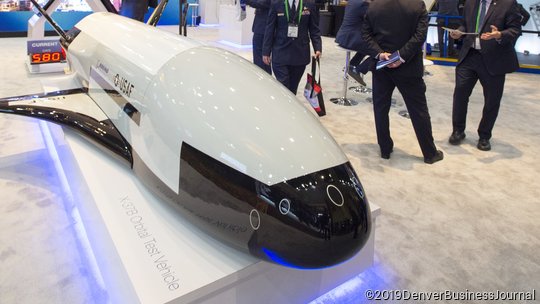
The Space Force announced that tests aboard the X-37B are meant to ensure secure operations in space. The subtext here emanates from an assumption common across military planning, that the next shooting war between the U.S. and a world power could extend off the planet.
This isn't far-fetched. Consider that the first known act of space war took place on Oct. 31, when an Israeli anti-missile system shot down a Yemeni ballistic missile that had traveled above the Kármán line. That line is a boundary at 62 miles above mean sea level that borders Earth's atmosphere. Many consider it the beginning of space.
Rival space programs in Russia and China are understood to be building capabilities not just to thwart U.S. satellites but possibly to engage and destroy — fighting humanity’s next battles in orbit.
Since it was formed, the Space Force has received more money from Congress in each federal budget than the military initially sought. Billions of dollars' worth of federal contracts have flowed to space contractors building new technologies for a military expecting to fight in space. Central Florida has benefitted since its biggest defense contractors are among those awarded.
On Nov. 8, Lockheed Martin Corp. (NYSE: LMT) announced it had received a $33.7 million contract "program to mature high-power nuclear electric power and propulsion technologies and spacecraft design."
Back in August, Northrop Grumman Corp. (NYSE: NOC) and Lockheed won a combined $1.5 billion for a new data relay constellation in low Earth orbit.
In both cases, there's work for Florida, since business units around the U.S. divide up the work according to specialty areas. Further, with Cape Canaveral Air Force Station being the most active spaceport in the world, there's plenty of work for the many smaller Central Florida businesses that support launches attached to Space Force programs.
Space domain defense is a hot topic for commercial concerns as well as defense agencies this year, evidenced by the full sessions at the 39th Space Symposium in Colorado Springs, Colorado. Space law and space warfighters were among the subjects covered. The tone from military leadership at the symposium sounded expectant, and talk of the potential for military conflict reaching space was ever present.
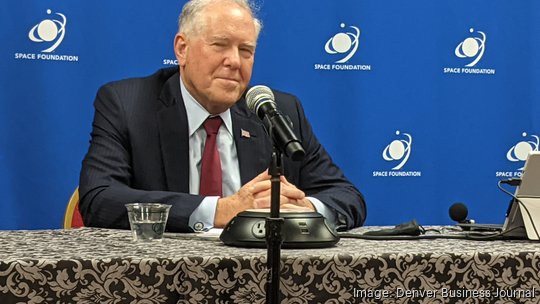
Frank Kendall III, U.S. secretary of the Air Force, said during his recent tour visiting allied nations in the Pacific, leaders kept bringing up China’s growing and increasingly ambitious military presence across the region.
Space Force and the space industry are key to dealing with this new reality, Kendall said.
Today a total of 10,098 unclassified satellites — and an unknown number of classified ones — orbit in space, according to a digital model of the earth and its satellites created by the Department of Computer Sciences at the University of Central Florida displayed at the Interservice/Industry Training, Simulation and Education Conference at the Orange County Convention Center in November.

These satellites are essential to telecommunications infrastructure providing on-the-ground and in-flight service.
Sign up here for The Beat, Orlando Inno’s free newsletter. And be sure to follow us on LinkedIn, Facebook and X.


